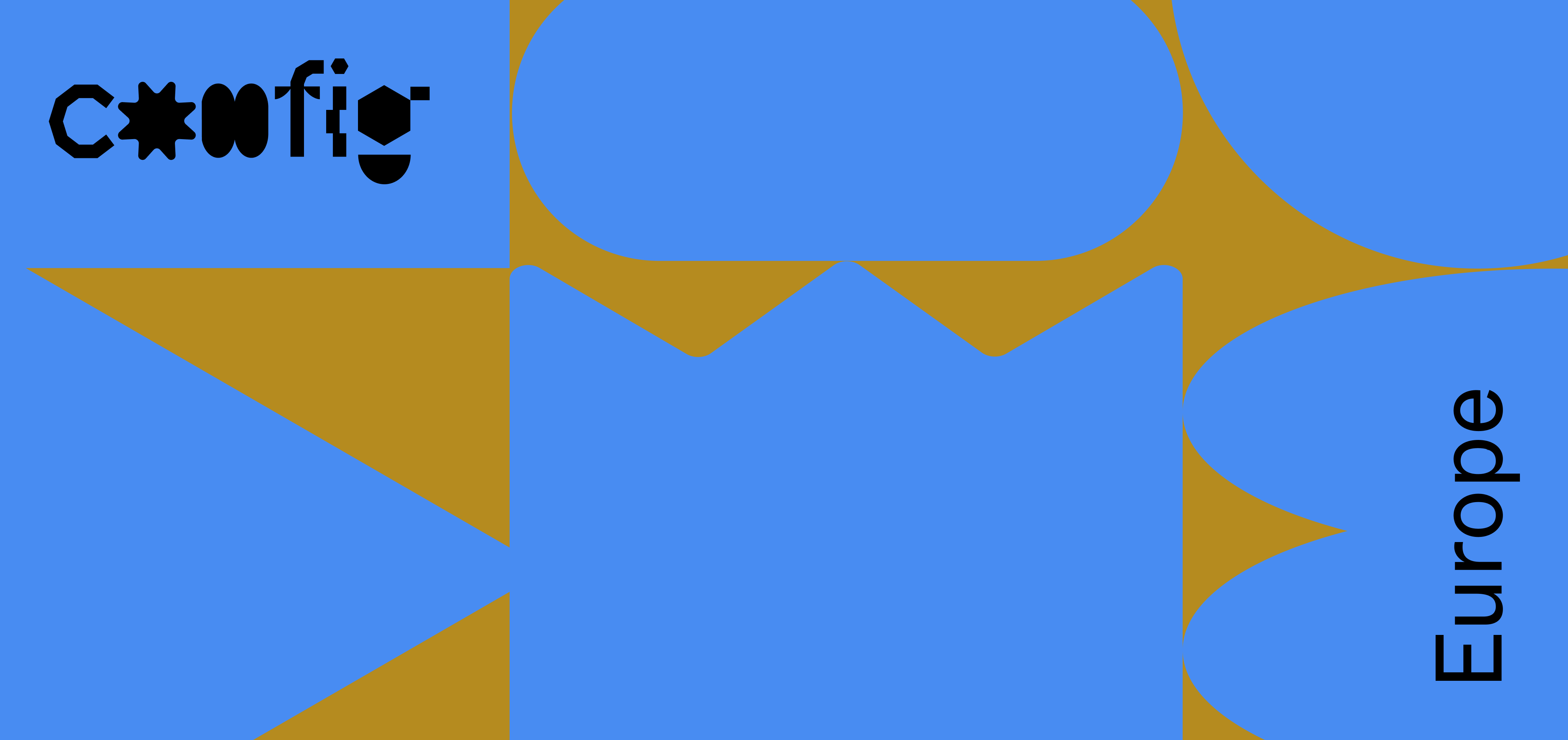Learning and failing as a team


Config Europe really got us thinking about how to build better products and be better teammates—and the intersection of the two. Read on for our reflections, and watch the breakout sessions for even more learnings.
Last week we shared Halli Thorleifsson’s closing keynote and some of our favorite takeaways We’ve curated some of our favorite moments from Config Europe, including Halli Thorleifsson’s closing keynote.
Creating moments of connection
Halli reminded us to find meaning in what we do, and how our work should be a balance of function and feeling. So many talks at Config Europe did just that. With tactical tips for putting accessibility first and how to keep design in sync with code, and reflections on tech ethics and what it means to fail together, breakout sessions covered craft and skill, while really getting us to think about what it means to work better as a team.
Expanding the team
Processes are central to making design more open Processes shape how you design, develop, and work together as a team. We’re sharing takeaways from Config Europe on how the right processes result in more open and inclusive products. 
Building an open and inclusive design process
This openness extends beyond tools and resources. “Designers are opening up,” Declan says. “We’re accepting more people outside our design circles.” Just like how close collaboration with people across the product development team can make a design system more effective, welcoming more people with a diverse set of skills into the process—across design, development, product management, and beyond—will result in more “human-centered design, products, and services,” Declan says. “It’s all about expanding the team.”
Celebrating failure
Figma’s Kelsey Whelan, Product Manager, and Product Designer Nikolas Klein agree that getting diverse perspectives results in better products, even (and especially) when that means failing in front of each other. For Niko and Kelsey, “failing together” was a huge part of the success of Variants, a feature we announced at Config Europe.
As the team started testing early versions of the feature, they realized “it was really powerful,” says Kelsey, “but it wasn’t very approachable,” which meant that they still had work to do. “We wanted this feature to be one that anyone at Figma could use—or any Figma user could.” Once they made adjustments and were ready to conduct usability testing, what they thought would be a series of short tests over a couple weeks turned into four rounds of testing over six weeks. In other words, Kelsey says, “We were much further off than we realized.”
They decided to make the most of the remote environment and invite everyone at Figma to participate. In addition to those who worked directly on the product, Figmates across teams—including designer advocates, product educators, and engineering managers—joined usability tests via Zoom. With these different perspectives, the team even caught some bugs during the sessions and discussed fixes in the dedicated Slack channel. “Of course it’s hard seeing that your ideas aren’t working,” says Niko. But once the working group incorporated feedback and people started to get it more intuitively, it was even more rewarding to see things work.
The usability tests were a reminder that inviting more people into the process results not only in a better experience for our users, but also in a more open culture for our team—one in which failure is considered an opportunity to improve, iterate, and as Niko says, “fail forward,” together.
It has been exactly one month since Config Europe, and we still can’t get over the fact that nearly 10,000 of you across 150 countries virtually came together to learn, share, and connect. As Figma’s Nathalie Marchino, one of the hosts of the event, reminded us, “While we’re done with Config, that doesn’t mean we’re done connecting with each other.” Watch the breakout sessions and join Friends of Figma to get involved in the community. We hope to see you there.

Alia Fite is a writer and editor on Figma's Content & Editorial team. She has previous experience at Stripe and Dropbox.



